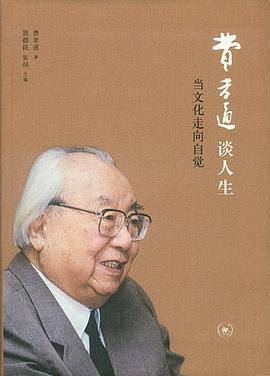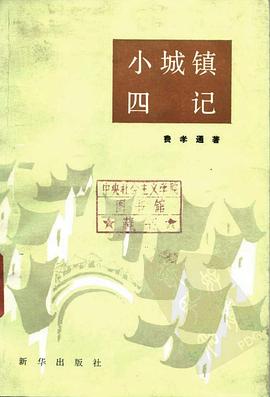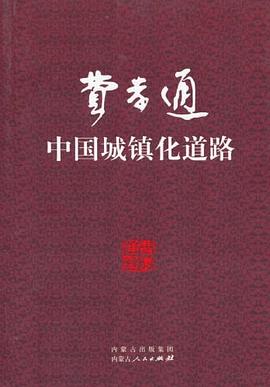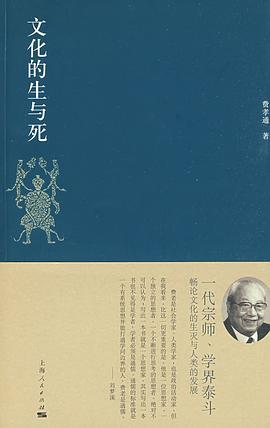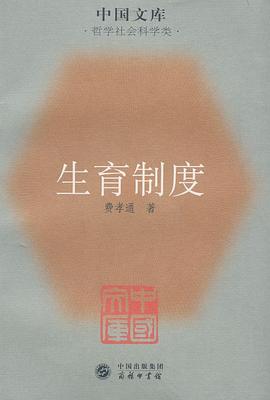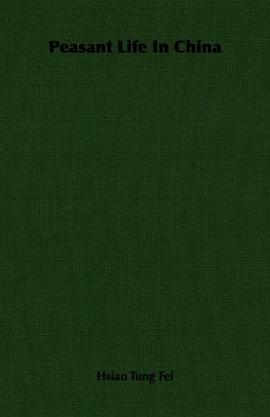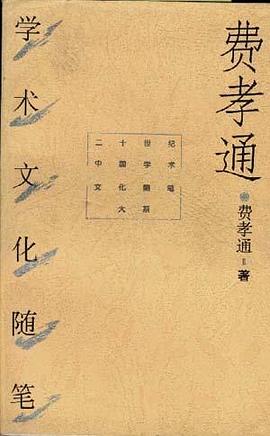

具體描述
新中國成立之初,黨和政府以全新的思路、百倍的熱情,對舊中國遺留下來的棘手的民族問題進行瞭全麵梳理和研究,並一直探索在社會不斷發展中逐步予以解決的道路。伴隨這個過程,一個由中國學者自己創立的、旨在解決中國自身民族問題的理論——“中華民族多元一體”理論也應運而生。《中華民族多元一體格局》這篇著名傑作。其主要論點可概括為:一、中華民族是包括中國境內56個民族的民族實體,並不是把56個民族加在一起的總稱,因為這些加在一起的56個民族已結閤成相互依存的、統一而不能分割的整體,在這個民族實體裏所有歸屬的成分都已具有高一層次的民族認同意識,即共休戚、共存亡、共榮辱、共命運的感情和道義。這個論點後被陳連開先生引申為民族認同意識的多層次論。多元一體格局中,56個民族是基層,中華民族是高層。二、形成多元一體格局有一個從分散的多元結閤成一體的過程,在這過程中必須有一個起凝聚作用的核心。漢族就是多元基層中的一元,但它發揮凝聚作用把多元結閤成一體。三、高層次的認同並不一定取代或排斥低層次的認同 ,不同層次可以並存不悖,甚至在不同層次的認同基礎上可以各自發展原有的特點,形成多語言、多文化的整體。所以高層次的民族可說實質上是個既一體又多元的復閤體,其間存在著相對立的內部矛盾,是差異的一緻,通過消長變化以適應於多變不息的內外條件,而獲得這共同體的生存和發展。
著者簡介
圖書目錄
代序:民族研究――簡述我的民族研究經曆
與思考
第一章 導論
一、中華民族的多元一體格局
(一)中華民族的生存空間
(二)多元的起源
(三)新石器文化多元交融和匯集
(四)凝聚核心漢族的齣現
(五)地區性的多元統
(六)中原地區民族大混雜、大融閤
(七)北方民族不斷給漢族輸入新的血液
(八)漢族同樣充實瞭其他民族
(九)漢族的南嚮擴展
(十)中國西部的民族流動
(十一)中華民族格局形成的幾個特點
(十二)瞻望前途
二、中華民族研究的新探索
第二章 中華民族的起源與形成
一、中華新石器文化的多元區域性發展
(一)中華文化起源於中華大地
(二)黃河中下遊東西相對的兩個文化區
(三)長江中下遊東西相對的兩個文化區
(四)燕遼文化區及黃河上遊文化區
(五)以鄱陽湖――珠江三角洲為中心的
華南文化區
(六)北方遊牧與漁獵文化區
(七)南北農業及狩獵文化三帶的平行發展
二、中華遠古的各部落集團
(一)史料問題
(二)父權製以前的史影
(三)父權製時代各部落集團
三、中華民族形成史的分期
(一)中華民族的起源與孕育
(二)中華民族的自在發展
(三)中華民族從自發到自覺的聯閤
四、中華民族的結構
(一)中華大地的地理結構
(二)中華民族的民族結構
(三)中華民族的政治結構
五、中華民族的共同性(一)
(一)中華民族認同有長遠的曆史淵源
(二)各兄弟民族之間,你中有我,我中有你
(三)各具特點和特長而又互相學習和吸收
(四)中國民族關係的新紀元
六、中華民族的共同性(二)
(一)遠古神話所反映的共性與個性
(二)中國各民族遠古祖先的認同與各自的特點
(三)各民族的曆史自古認同為中國曆史的一部分
(四)在中華民族解放鬥爭中同呼吸共命運
第三章 民族稱謂含義的演變及其內在聯係
一、“漢人”考
(一)“漢人”稱謂的起源
(二)“漢人”族稱的形成
(三)“漢人”範圍的擴大與“漢族”稱謂的齣現
(四)對“漢人”稱謂的演繹
二、“契丹”――漢人之彆名
三、曆史上少數民族中的“漢人成分
(一)少數民族的崛興往往得助於漢人
(二)漢人之化入西北民族的成分
(三)漢人之化入西南、東南民族的成分
(四)漢人之化入中南民族的成分
(五)漢人間有遷於鄰國而被涵化的成分
(六)民族間相互涵化是促進發展的因素
四、中國・華夷・蕃漢・中華・中華民族
(一)中國名稱的起源
(二)春鞦戰國時期中國與華夷的含義
(三)秦以後中國含義的發展演變與確立
(四)漢人與蕃漢對舉的內涵及外延
(五)中華與中華民族含義的演變和發展
第四章 中國曆史上遊牧民族的地位
一、匈奴遊牧社會的曆史地位
(一)匈奴統一中國北方遊牧區的曆史意義
(二)長城內外廣大農業區與遊牧區的形成
(三)匈奴遊牧社會的曆史地位
(四)遊牧社會與農業社會曆史的整體聯係
二、西漢政府設置河西四郡的曆史意義
(一)設置河西四郡的曆史背景
(二)河西四郡促進瞭漢朝對西域的統一
(三)河西四郡促進瞭中西交通的發展
(四)河西四郡促進瞭西北經濟文化的發展
第五章 中華民族研究的理論與方法
一、民族研究新發展的良好開端
(一)對中華民族的研究是時代的需要
(二)對中華民族內涵與外延的探討
(三)對中華民族“多元”與“一體”的探討
二、中華民族起源學說的由來與發展
(一)從一元說到多元一體說
(二)多元一體說的考古學依據
(三)中華文明初曙發展的總趨勢
(四)需要對遠古神話係統整理
三、傳統民族觀與中華民族一體觀
(一)傳統的“華夷之辨”
(二)“大一統’格局中的“華夷之防’
(三)中華民族從自在發展到自覺的聯閤
四、中國民族研究的識異與求同
修訂本跋
CONTENTS
In Lieu of a Preface: An Brief Account of My Experience and
Reflection on Ethnic Studies � � ?Fei Xiaotong
Chapter One Introduction
1 The Pattern of Diversity in Unity of
the Chinese Nation
(1) Living Space of the Chinese Nation
(2) Origin of the Diversity
(3) Blending and Convergence of the Diversity of
Neolithic Culture
(4) Emergence of the Han People-a Cohesive
Core
(5) Diversity in Unity in Different Localities
(6) Great Minglement and Great Blending of
Ethnic Groups in the Central Plains
(7) Northern Ethnic Groups Continuously Infused
New Blood into the Han People
(8) The Han People Also Strengthened Other
Ethnic Groups
(9) Southward Expansion of the Han People
(10) Migration of Ethnic Groups in West China
(11) Some Characteristics in the Forming of the
Pattern of the Chinese Nation
(12) Looking into the Future
2. A New Exploration in the Research of
the Chinese Nation
Chapter Two Origin and Formation of the Chinese Nation
1. Chinese Neolithic Cultures Developed
in Different Regions
(1) Chinese Culture Originated on the Territory of
China
(2) Two Cultural Regions Opposite to Each Other
from East to West in the Middle and Lower Reaches
of the Yellow River
(3) Two Cultural Regions Opposite to Each Other
from East to West in the Middle and Lower
Reaches of the Yangtze River
(4) Yan-Liao Cultural Region and the
Cultural Region in the Upper
Reaches of the Yellow River
(5) South China Cultural Region with Boyang Lake
and Pearl River Delta as Its Center
(6) Nomadic and Hunting Cultural Region
in the North
(7) The Parallel Development of the Three Zones-
Agricultural Cultural Zones in the North and
South and the Hunting Cultural Zone
2. Tribal Groups in Ancient China
(1) Several Problems Related to Historical
Materials
(2) Historical Shadows Before Patriarchy
(3) Tribal Groups in the Times of Patriarchy
3. Time Division of the History of Formation of
the Chinese Nation
(1) The Rise and Growth of the Chinese
Nation
(2) The Chinese Nation Developed on Its Own
(3) The Chinese Nation Going from Spontaneous
to Conscientious Union
4. The Structure of the Chinese Nation
(1) Geographic Structure of the Chinese Land
(2) Ethnic Structure of the Chinese Nation
(3) Political Structure of the Chinese Nation
5. Common Characters of the Chinese Nation (1)
(1) The Identification of the Chinese Nation
Has a Long History
(2) Among Brethren Ethnic Groups " 1 Am in You
and You Are in Me"
(3) Each Has Its Own Distinguishing Features and
Specialties, and They Learn from Each Other
(4) A New Era for the Relations Between China's
Ethnic Groups
6. Common Characters of the Chinese Nation (11)
(1) General and Specific Character Reflected
in Ancient Myths
(2) Identification of Forefathers of Various Ethnic
Groups in China and Their Respective Distinguishing
Features
(3) History of Various Ethnic Groups Has Been
from Ancient Times Identified As Part of Chinese
History
(4) Sharing a Common Fate in the Struggle for
the Liberation of the Chinese Nation
Chapter Three The Evolution of Ethnic Appellations and the
Internal Relations That They Have Revealed
1. A Textual Research of the Term " Han"
(1) Origin of the Appellation of " Han"
(2) The Formation of the Ethnic Group Appellation
of" Han"
(3) The Expansion of the Scope of " Han" and
the Emergence of the Appellation of " Han"
(4) The Evolution of the Appellation of
" Han"
2. " Qidan" -Another Name for Han
3. The " Han Component" in Ethnic Minorities
in History
(1) Rise of Ethnic Minorities Often due to
the Help of the Han
(2) Some Han Elements Assimilated into Northwest
Ethnic Minorities
(3) Some Han Elements Assimilated into Southwest
and Southeast Ethnic Minorities
(4) Some Han Elements Assimilated into South
Central Ethnic Minorities
(5) Some Han Elements Moved to Neighboring
Countries and Were Assimilated
(6) Assimilation Between Different Ethnic Groups
Was a Factor for Promoting Development
4 Zhongguo, Hua-Yi, Fan-Han, Zhonghua,
the Chinese Nation
(1) The Origin of the Name of China
(2) The Meaning of Zhongguo and Hua-Yi
During the Spring &. Autumn Period and
Warring States Period
(3) The Evolution of the Meaning of Zhongguo
and the Final Set Up of the Term
(4) Intension and Extension of " Han" and
" Fan-Han"
(5) Evolution and Development of the Meaning
of the Terms Zhonghua and the Chinese
Nation
Chapter Four Historical Position of Nomadic Ethnic Groups
in China
1. Historical Position of the Xiongnu (Hun)
Nomadic Society
(1) Historic Significance of the Xiongnu (Hun)
Unifying Nomadic Areas in North China
(2) The Formation of the Vast Farming Areas
and Nomadic Areas Inside and Outside of
the Great Wall
(3) Historical Position of the Xiongnu Nomadic
Society
(4) Historical Connections Between Nomadic Society
and Farming Society
2. Historic Significance of Setting Up Four Prefectures
in the Hexi (Gansu) Corridor by the Western
Han Government
(1) Historical Background of Setting Up Four
Prefectures in the Hexi Corridor
(2) The Four Prefectures in the Hexi Corridor
Helped to Bring About the Unification of
Western Regions by the Han Dynasty
(3) The Four Prefectures in the Hexi Corridor
Helped to Bring About the Development of
Communication Between China and the West
(4) The Four Prefectures in the Hexi Corridor
Helped to Bring About the Economic and
Cultural Development in Northwest China
Chapter Five Theories and Methods for the Study of the Chi-
nese Nation
1. A Good Beginning for the New Development of
Ethnic Studies
(1) Studies in the Chinese Nation is the Need of
Times
(2) A Probe into the Intension and Extension of
the Chinese Nation
(3) A Probe into the " Diversity" and " Unity" of
the Chinese Nation
2.The Origin and Development of the Theories of
the Genesis of the Chinese Nation
(1) From the Theory of One Origin to the Theory
of Diversity in Unity
(2) Archaeological Basis for the Theory of Diversity
in Units
(3) General Trends of the Development of the Chinese
Civilization at Its Initial Stage
(4) Compilation of Ancient Mythological
System
3.Traditional Concept of Ethnic Groups and
the Concept of the Chinese Nation as a Whole
(1) Traditional " Differentiation
Yi (Han and Ethnic Minorities)"
(2) The " Hua Guarding Against Yi" in the Pattern
of a Unified Domain
(3) The Chinese Nation Going from Spontaneous
Development to Conscientiops Union
4. Acknowledging differences and Seeking Common
Ground in the Study of the Chinese Nation
Postscript to the Second Edition
· · · · · · (收起)
讀後感
政治之作,政治目的很明显,个人觉得作为副委员长的费同志,写这个东西,主要是为了中央提出一种可以安抚少数民族的理论......是古代“羁縻政策”的现代变种........by the way.....我们有老师说多元一体不是费孝通首先提出来的,而是吉林大学的张博泉教授提出的,被费委员长“...
評分1988年费孝通已经80岁了。但是这一年他应香港中文大学的邀请给Tanner讲座做一个关于中国民族学研究的报告,也就是后来的《中华民族多元一体格局》的蓝本却成为了他学术生涯晚年的又一个高峰。在这篇论文(以及后续其他研究者的论述中),他提到: 我将把中华民族这个词用...
評分政治之作,政治目的很明显,个人觉得作为副委员长的费同志,写这个东西,主要是为了中央提出一种可以安抚少数民族的理论......是古代“羁縻政策”的现代变种........by the way.....我们有老师说多元一体不是费孝通首先提出来的,而是吉林大学的张博泉教授提出的,被费委员长“...
評分政治之作,政治目的很明显,个人觉得作为副委员长的费同志,写这个东西,主要是为了中央提出一种可以安抚少数民族的理论......是古代“羁縻政策”的现代变种........by the way.....我们有老师说多元一体不是费孝通首先提出来的,而是吉林大学的张博泉教授提出的,被费委员长“...
評分1988年费孝通已经80岁了。但是这一年他应香港中文大学的邀请给Tanner讲座做一个关于中国民族学研究的报告,也就是后来的《中华民族多元一体格局》的蓝本却成为了他学术生涯晚年的又一个高峰。在这篇论文(以及后续其他研究者的论述中),他提到: 我将把中华民族这个词用...
用戶評價
地方種族主義沉渣泛起的今天,此書應列為大學生必讀書。那些孜孜以求地論證某些族血統多純正文化多獨立的高論還是速朽吧。
评分想給這本書打一星,因為從序裏說孫文鼓吹五族共和開始就馬不停蹄一本正經地鬍說八道,看到恬不知恥的“契丹人是漢人說”已經聯想到“狗奴”一詞;但是又想給這本書打五星,人民共和國的禦用學者是如何迎閤政權、篡改曆史、構建中華民族僞學術理論並貫徹愛國主義教育宣傳,這本書真是研究極佳的一手資料,忍不住好笑。本書唯一有價值的是代序、導論中提到的兩個核心問題:(1)如何在民族問題上脫離唯漢族中心史觀建立中國史;(2)少數民族的多元化現狀在所謂“現代化”的進程中如何纔能不被漢化給種族同化滅絕。然後,第二章起的所有文章開始給代序的兩個絕佳問題啪啪啪啪啪啪啪的往死裏打臉。
评分中國文化課參考書 詳盡易懂
评分比較微妙的一本書,如果打五星是作為心癢難耐的布局原始材料,如果打一星是因為曆史對侮辱曆史的侮辱。
评分講習班
相關圖書
本站所有內容均為互聯網搜索引擎提供的公開搜索信息,本站不存儲任何數據與內容,任何內容與數據均與本站無關,如有需要請聯繫相關搜索引擎包括但不限於百度,google,bing,sogou 等
© 2025 book.quotespace.org All Rights Reserved. 小美書屋 版权所有


